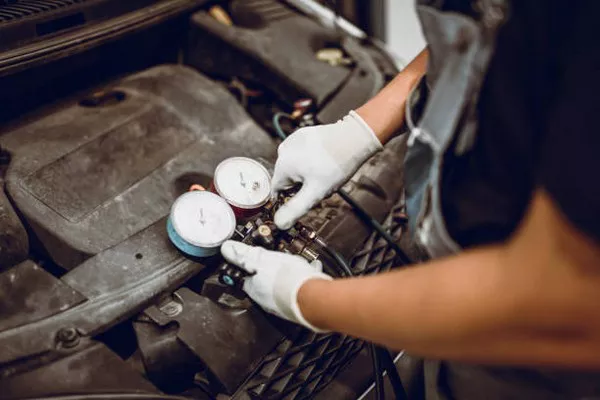Small air compressors are versatile tools used in various applications, from inflating tires to powering pneumatic tools. Selecting the best small air compressor involves understanding your specific needs, the features available, and how they perform. This guide will explore the top small air compressors on the market, highlighting their features, pros and cons, and ideal applications.
What is a Small Air Compressor?
Definition
A small air compressor is a compact, portable device designed to compress air and store it in a tank for various uses. These compressors are typically lightweight, making them easy to transport and suitable for home or light industrial use.
Common Uses
Inflating Tires: Perfect for cars, bicycles, and sports equipment.
Powering Tools: Ideal for nail guns, spray guns, and impact wrenches.
Cleaning: Effective for blowing dust off equipment or workspaces.
DIY Projects: Great for hobbyists and DIY enthusiasts needing consistent air pressure.
Key Features to Consider
When selecting a small air compressor, consider the following features:
1. Tank Size
Purpose: The tank size determines how much compressed air the compressor can store. Larger tanks provide more air, while smaller tanks are more portable.
Typical Sizes: Small compressors typically range from 1 to 6 gallons.
2. PSI and CFM Ratings
PSI (Pounds per Square Inch): Indicates the maximum air pressure the compressor can produce. Most small compressors range from 90 to 150 PSI.
CFM (Cubic Feet per Minute): Measures the volume of air the compressor can deliver. A higher CFM rating allows for powering more demanding tools.
3. Portability
Weight: Look for lightweight designs with built-in handles or wheels for easy transport.
Size: Compact designs save space and make storage easier.
4. Noise Level
Decibel Rating: Small compressors can vary in noise levels. Look for units that operate at lower decibels for quieter environments, especially if you work indoors.
5. Power Source
Electric vs. Gas: Electric compressors are quieter and suitable for indoor use, while gas models offer more power and portability for outdoor use.
6. Durability and Build Quality
Materials: Check for rugged materials that can withstand job site conditions.
Warranty: A good warranty indicates the manufacturer’s confidence in the product’s durability.
Top Small Air Compressors on the Market
Here, we will review some of the best small air compressors, focusing on their specifications, pros, cons, and ideal uses.
1. California Air Tools CAT-1P1060S
Tank Size: 1 gallon
PSI: 120 max
CFM: 1.2 @ 90 PSI
Noise Level: 56 dB
Pros:
Ultra-quiet operation
Lightweight and portable
Oil-free design for easy maintenance
Cons:
Limited tank size for continuous use
Ideal Use: Great for home users needing a quiet compressor for inflating tires or using small pneumatic tools.
2. Porter-Cable C2002-WK
Tank Size: 6 gallons
PSI: 150 max
CFM: 2.6 @ 90 PSI
Noise Level: 90 dB
Pros:
Larger tank for longer use
High CFM rating for powering various tools
Durable and stable design
Cons:
Heavier than some other small compressors
Ideal Use: Ideal for DIY enthusiasts or professionals who require a reliable compressor for nail guns and other pneumatic tools.
3. DeWalt D55140
Tank Size: 1 gallon
PSI: 135 max
CFM: 0.8 @ 90 PSI
Noise Level: 71 dB
Pros:
Compact and lightweight
Easy to carry with a built-in handle
High maximum pressure
Cons:
Lower CFM may limit usage with larger tools
Ideal Use: Perfect for small jobs and inflating tires, especially where portability is essential.
4. Bostitch BTFP02012
Tank Size: 6 gallons
PSI: 150 max
CFM: 2.6 @ 90 PSI
Noise Level: 78.5 dB
Pros:
Lightweight and easy to transport
Integrated control panel
High performance for various applications
Cons:
Slightly noisier compared to some models
Ideal Use: Excellent for both professionals and DIYers needing a versatile compressor for multiple tasks.
5. Makita MAC2400
Tank Size: 4.2 gallons
PSI: 130 max
CFM: 4.2 @ 90 PSI
Noise Level: 79 dB
Pros:
Durable cast iron pump for longevity
High CFM for running multiple tools
Oil-lubricated for reduced wear
Cons:
Heavier than other small compressors
Ideal Use: Suitable for contractors and professionals needing reliable power and durability.
Maintenance Tips for Small Air Compressors
1. Regularly Check the Oil
For oil-lubricated models, check the oil level frequently and change it as recommended by the manufacturer.
2. Drain the Tank
Condensation can build up in the tank, leading to rust. Regularly drain the tank to prevent this issue.
3. Inspect Hoses and Fittings
Check hoses and fittings for wear and leaks. Replace damaged components immediately.
4. Keep the Filter Clean
If your compressor has an air filter, clean or replace it regularly to maintain optimal airflow.
5. Store Properly
Store your compressor in a dry, clean environment to prevent damage and ensure longevity.
Conclusion
Choosing the best small air compressor depends on your specific needs, including the type of work you plan to do and your portability requirements. By understanding key features, comparing popular models, and following maintenance tips, you can select a compressor that meets your expectations. Whether you’re inflating tires, powering tools, or tackling DIY projects, a reliable small air compressor will enhance your productivity and efficiency.
Related topics:

